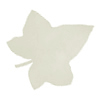|
What
Is Breast Cancer?
an article by Susun S. Weed
Breast
cancer is unchecked growth of abnormal breast cells:
• What causes cells to become abnormal and reproduce
wildly? Damage to the DNA, the brain of the cell,
which causes mutations and activation of oncogenes.
Usually one mutation isn’t enough; most cells must
undergo several mutations before they become cancerous.
(Sometimes the mutations must occur in sequence
to create a cancer, sometimes random order will
do it.) What causes DNA damage? Radiation, free
radicals, genetic defects, electrical fields, chemicals,
drugs, viruses, and metabolic stresses.
Injury to the DNA initiates all cancer:
• When mutations accumulate and oncogenes turn on,
the cell is initiated. It is abnormal, but not cancerous.
Initiated cells are diagnosed as atypia, dysplasia,
or hyperplasia.
• Damaged cells alone offer no threat to long life.
To become threatening, the abnormal cells must be
promoted. Promoters bring the cells nutrients so
they can reproduce. (One of the strongest promoters
of breast cancer is estrogen.) Although promoted
cells can disguise themselves so the immune system
won’t recognize them, most of them are seen and
eaten, or encapsulated by the body so they do no
harm. Promoted cells are called carcinoma in situ.
According to Christiane Northrup, M.D., in situ
cancer cells are frequently found in the breasts
of women who die of causes other than cancer. And
according to Susan Love, M.D., breast cancer specialist,
in situ cells are reversible without invasive treatments
and shouldn’t be thought of as cancers.
The cancer cascade: initiation, promotion, growth:
• Promoted breast cells, no matter how many of them
there are, are not classified as invasive unless
they spread out of the tissues of origin and into
the surrounding tissues. This is the growth phase.
When promoted cells enter the growth phase, they
begin to form a tumor and to recruit blood vessels
to help supply their immense need for nutrients.
(The tumor may grow so quickly that cells in its
center die from lack of nourishment.) The diagnosis
now becomes infiltrating or invasive carcinoma.
The cancer cascade can be halted or reversed:
• Once a mass of abnormal, quickly-replicating cells
has created a network of blood vessels, individual
cancer cells can separate from the tumor and travel
to other parts of the body. Because the breast is
not vital to life, a breast cancer that stays in
the breast is not life-threatening. But if breast
cancer cells get to the liver, lungs, bone marrow,
or the brain and continue to grow, they can hinder
the functioning of processes necessary for life.
The body attempts to check this spread by locking
breast cancer cells in lymph node prisons and by
sending immune system cells out to eat traveling
cancer cells. If cancer cells are found in the axillary
lymph nodes, the diagnosis is aggressive or metastasized
carcinoma.
Ninety percent of cancer deaths are from metastases:
• Not everyone whose cellular DNA is damaged will
get cancer. Why not? All cells have the capacity
to repair themselves or to shut down if they are
mutated or damaged. Good lifestyle habits and ordinary
foods such as lentils also reverse DNA damage.
Special immune cells eat potential cancers:
• The wear-and-tear of life gives rise to so many
mutated, abnormal, initiated cells (even in a healthy
person) that the immune system forms a constant
stream of specialized cells to seek out and consume
them. So long as the immune system is strong, and
well supplied with nutrients, initiated and promoted
cells can be harmlessly eliminated, checking the
possibility of cancer.
Cancer cells are immature yet reproduce without
limits. Living long past their normal span, they
appear immortal:
• Building powerful immunity isn’t always enough,
though. Cancer cells can trick the immune system
into leaving them alone, and they can replicate
so rapidly that they overwhelm the immune system
with sheer force of numbers. One of the reasons
breast cancer is so difficult to treat is that cancer
cells are full of life. They no longer have the
inner signal that tells them to die after reproducing.
Like the sorcerer’s apprentice, the woman with breast
cancer finds herself with cancer cells that replicate
unceasingly. Cancer cells never grow up and become
productive members of their community. They simply
take up space.
Breast cancer is not one disease, but many:
• Because there are different types of cells in
the breasts (e.g., ducts and lobes) and a variety
of ways that a cell can be abnormal, there are many
kinds of breast cancers and many possible treatments.
Of the two dozen kinds of breast cancer known, the
majority originate in the duct cells. (See illustration
of duct cells, page 106 in Breast Cancer? Breast
Health!)
• Some breast cancers grow slowly, others quickly.
Slow growing breast cancers double in size every
42100 days or more. Quick growing breast cancers
can double every 21 days. Pre- and peri-menopausal
women tend to have faster growing, more aggressive
breast cancers (about 1015 percent of all breast
cancers).
• Post-menopausal women, who account for 6080 percent
of all breast cancer cases, usually have slow-growing
cancers, which rarely metastasize.
Microscopic examination of cellular tissue is the
only scientifically accepted way to diagnose cancer.
• The first breast surgery most women will have
is a biopsy. When there is a suspicious finding
on a mammogram or a palpable lump, there is no way
to rule out cancer unless a piece of breast tissue
is removed and examined under a microscope by a
pathologist. If there is a diagnosis of cancer and
further surgery is done, the breast tissues removed
are also sent to the pathologist.
• The pathologist can see cancerous cells if they
are present and can determine the type and state
of the cancer by a variety of signs. These findings
are collected into a pathology report which will,
to a great degree, determine the treatment options
that you will be offered. Pathology reports are
based on opinion as well as fact, so many women
have two, three, or even four different pathologists
look at their tissue samples and give an opinion.
• To judge the “stage” of a cancer (see page 137,
Breast Cancer? Breast Health!), lymph glands are
removed (excised) from the nearby armpit. Lymph
gland excision always cuts some of the nerves to
the arm. Removal of the lymph glands does nothing
to treat or cure breast cancer, and may hinder the
body’s ability to deal with cancer. Lymph gland
removal can cause numbness as well as pain, impaired
circulation, swelling (sometimes severe and long-lasting),
and a life-long risk of severe infection. The more
lymph nodes removed, the more severe these side
effects.
• Lack of cancer cells in the lymph nodes doesn’t
guarantee that the cancer hasn’t metastasized (one-third
of all women with negative nodes nonetheless have
metastasizing cancer), but a positive finding does
indicate that the cancer has metastasized and may
be growing elsewhere in the body.
It is difficult to determine if a cancer will
metastasize:
• Aggressive (metastatic) cancer requires more vigorous
treatment than invasive (non-metastatic) cancer.
And treatment is more effective if undertaken before
the metastasized cells begin to form masses in critical
organs. But micro-metastases and small clumps of
cells are extremely difficult to find. What to do?
Orthodox treatments include: Surgery to remove the
primary tumor. Radiation to eliminate any other
cancer cells in the breast tissues. Chemotherapy
to kill any other cancer cells in the body. (But
those that survive - and some always do - mutate
and become invulnerable to further chemotherapy.)
And hormones such as tamoxifen to check recurrence
and metastatic growth.
Alternative treatments include: Caustic herbs and
pastes to burn away the primary cancer. Nourishing,
tonifying, and stimulating treatments for building
immune strength. And a variety of anti-cancer compounds
used systemically to eliminate cancer cells in the
breasts and elsewhere in the body. Exercise and
a diet of healthy food, nourishing infusions, healing
oils, and phytoestrogen-rich herbs to counter recurrence.
• Does survival after a diagnosis of breast cancer
depend on orthodox medical treatments? Women who
refuse such treatments do not die sooner than women
who follow orthodoxy, according to an old (1977),
but still valid, study by Hardin B. Jones, professor
of medical physics. (“A Report on Cancer” is available
at the library of the University of California at
Berkeley.)
If
you liked this excerpt by Susun S. Weed, you will
want
Breast Cancer? Breast Health! available from www.ashtreepublishing.com.
Legal
Disclaimer: This content is not intended
to replace conventional medical treatment. Any suggestions
made and all herbs listed are not intended to diagnose,
treat, cure or prevent any disease, condition or
symptom. Personal directions and use should be provided
by a clinical herbalist or other qualified healthcare
practitioner with a specific formula for you. All
material on this website/email is provided for general
information purposes only and should not be considered
medical advice or consultation. Contact a reputable
healthcare practitioner if you are in need of medical
care. Exercise self-empowerment by seeking a second
opinion.
Susun Weed
PO Box 64
Woodstock,
NY 12498
Fax: 1-845-246-8081
Visit
Susun Weed at: www.susunweed.com and www.ashtreepublishing.com
For permission to reprint this article, contact
: susunweed@herbshealing.com
Vibrant, passionate,
and involved, Susun Weed has garnered an international
reputation for her groundbreaking lectures, teachings,
and writings on health and nutrition. She challenges
conventional medical approaches with humor, insight,
and her vast encyclopedic knowledge of herbal medicine.
Unabashedly pro-woman, her animated and enthusiastic
lectures are engaging and often profoundly provocative.
Susun is one
of America's best-known authorities on herbal medicine
and natural approaches to women's health. Her four
best-selling books are recommended by expert herbalists
and well-known physicians and are used and cherished
by millions of women around the world. Learn more
at www.susunweed.com
This
article is © copyright Susun
S. Weed - Republished here with kind permission.
2007 |
|












